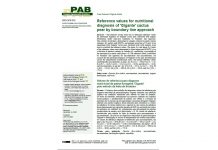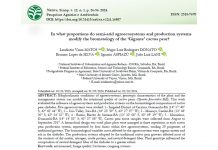Abstract: The reuse of wastewater from domestic sewage can contribute to forage production in regions with limited water availability. The aim was to study the agronomic performance of Gigante, Miúda, and Orelha de Elefante Mexicana cactus pear cultivars irrigated with treated sewage water; contents of macro- and micronutrients in plant tissues; export of nutrients and productivity. The study was conducted in an area near the domestic sewage treatment plant in the municipality of Guanambi, Bahia, Brazil. The experimental design was completely randomized blocks, with six replications. A drip irrigation system was used, with a flow rate of 1.6 L h-1 and a watering interval of three days, applying 33% of the reference evapotranspiration. The physical/chemical characteristics of the soil, dry matter content, nutritional content of the forage cactus pear, productivity, and soil quality were evaluated. Without soil correction or application of mineral or organic fertilizers, only with the application of wastewater, the forage cactus pear plants developed within expected standards. The ‘Orelha de Elefante Mexicana’ and the ‘Gigante’ show greater green mass productivity and irrigation water productivity for green mass when compared to the ‘Miúda’. The highest dry matter productivity is expressed by the Orelha de Elefante Mexicana cultivar. The decreasing order of macronutrient export by the forage cactus pear is K, Ca, N, Mg, S, and P, and Mn, Fe, Zn, B, and Cu for micronutrients. Irrigation with treated wastewater, using 33% of the reference evapotranspiration, maintains K contents within a sufficient range; however, for the other nutrients, it is insufficient for the forage cactus pear plants.
Keywords: Opuntia; semiarid; wastewater reuse; irrigation water productivity





